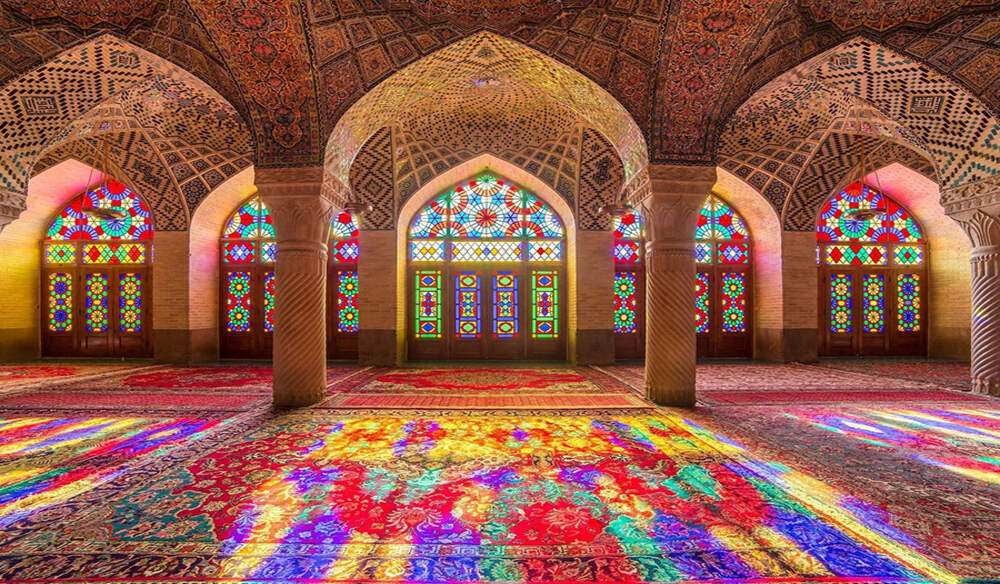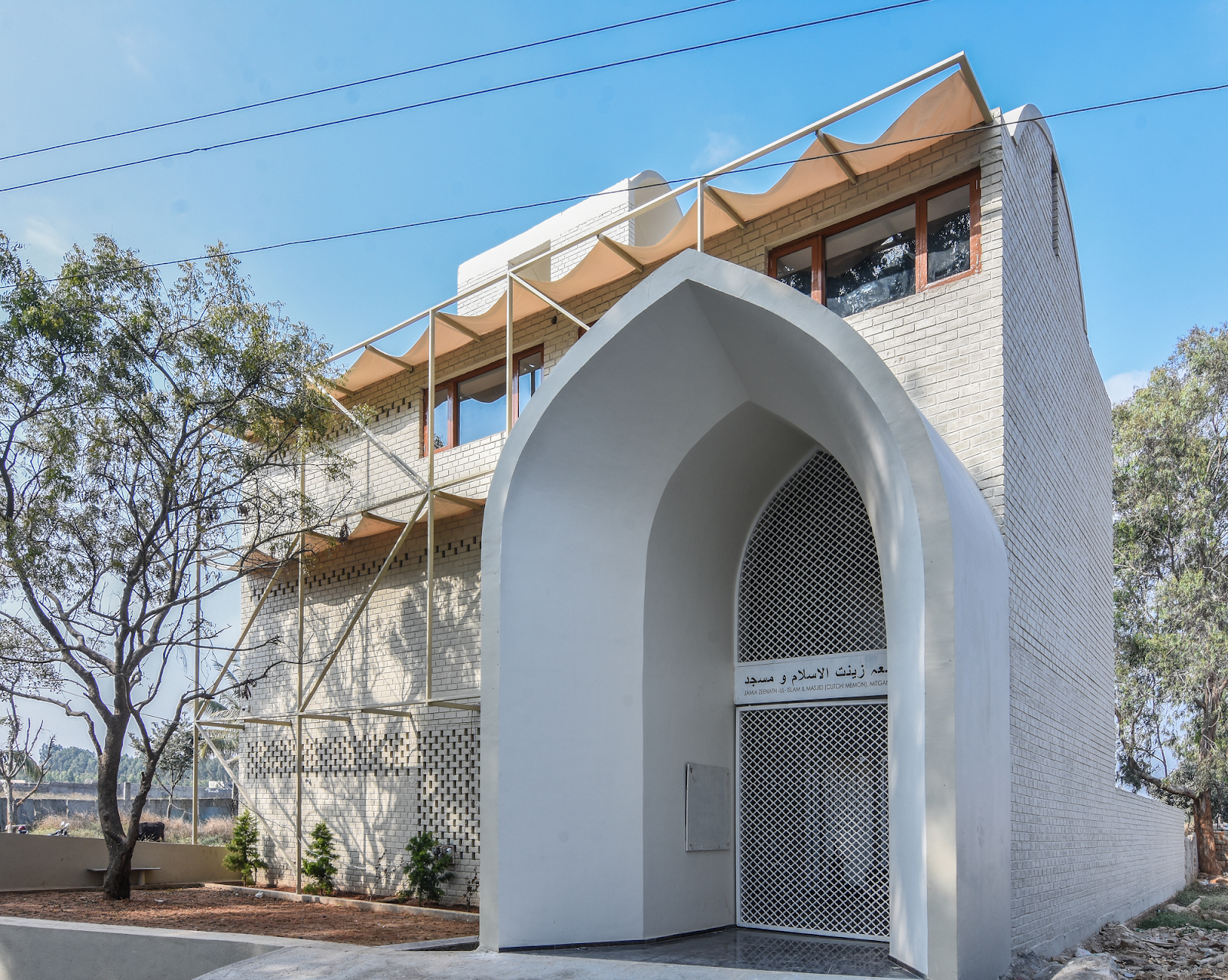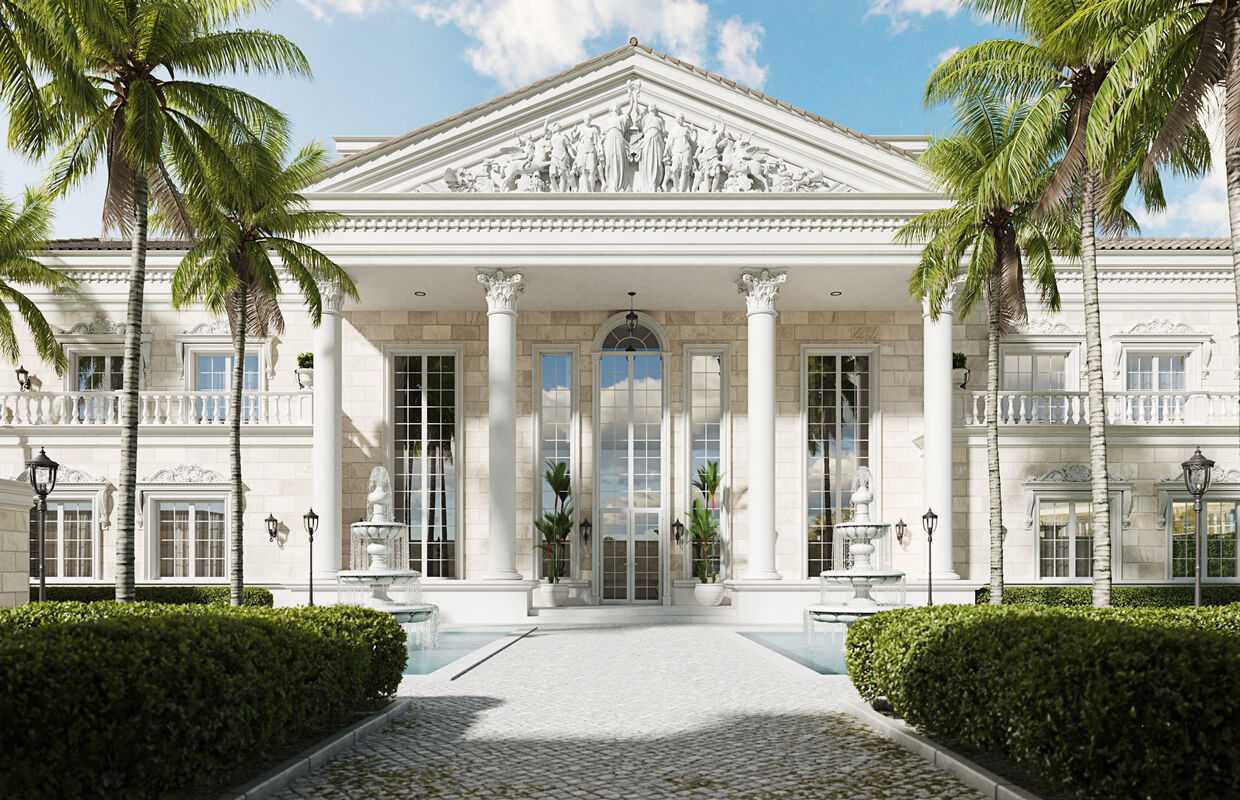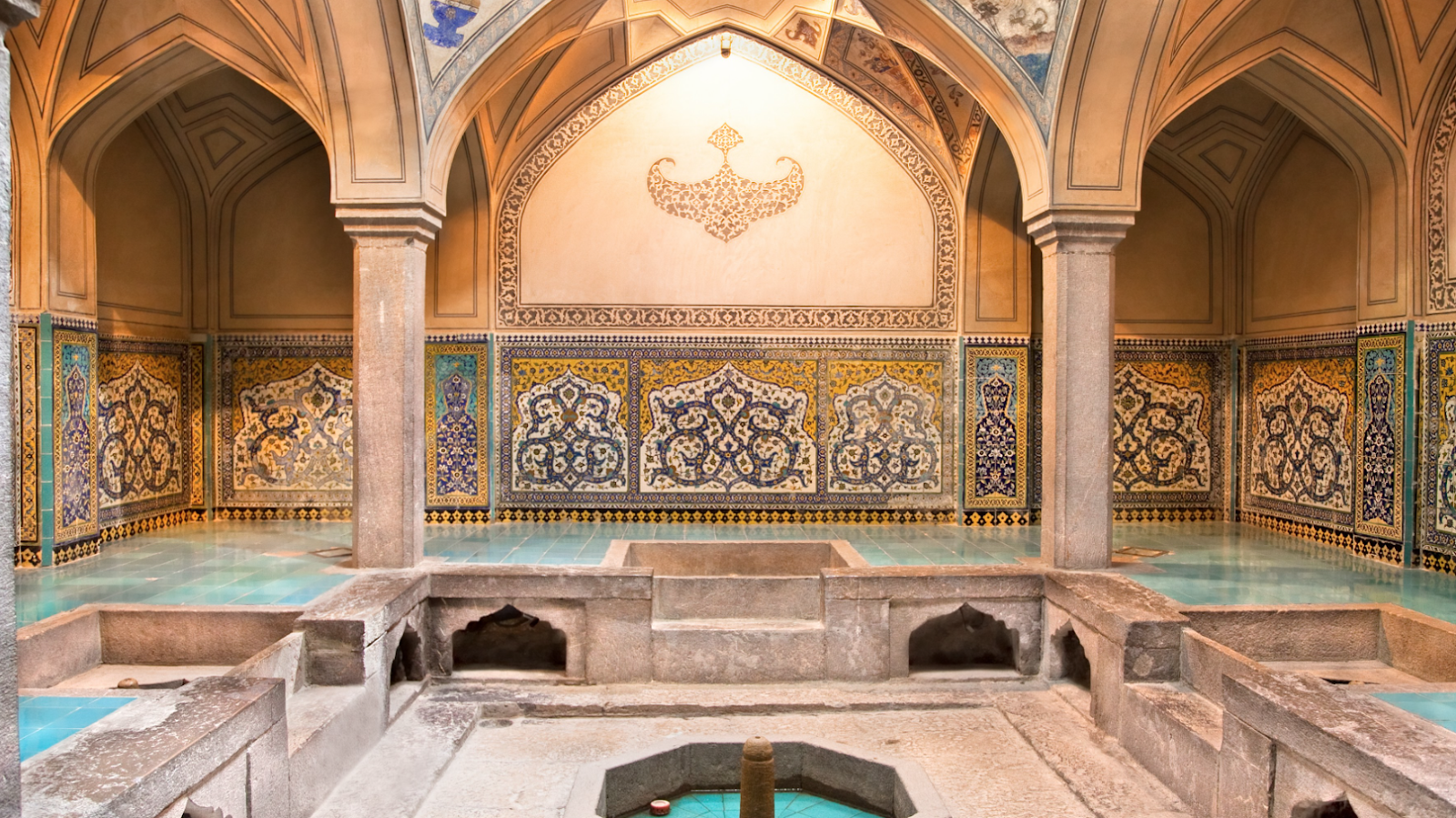Indo-Islamic Architecture: Significance, Features & Key Examples 2026

Table of Contents
Islam is a monotheistic religion that originated in the Arabian Peninsula in the 7th century CE. It has a rich cultural and intellectual heritage, with significant contributions to science, literature, art, mathematics, and architecture. Muslims (the followers of Islam) around the world have diverse cultural backgrounds and speak different languages, but they share a common religious identity and a sense of community, called “ummah.” The design style that emerges is a sum of different features that inspire and are an expression of the community.
History and Timeline of the Islamic Rule

The origin of Islamic rule in India dates back to the 7th century when Arab traders first came to the western coast of India. However, it was in the 12th century after the invasion of the Guhrid emperor Muhammad Ghori, when Islamic rule was first established in India under the title of “The Delhi Sultanate.”
Following the Ghurid dynasty was a series of 5 Islamic empires that ruled over parts of northern and central India from 1206 to 1526. During this period, unrelated heterogeneous dynasties ruled the Indian subcontinent, namely: the Mamluk dynasty (1206–1290), the Khalji dynasty (1290–1320), the Tughlaq dynasty (1320–1414), the Sayyid dynasty (1414–1451), and the Lodi dynasty (1451–1526). The first Sultan, Qutub-ud-din Aibak, was a general in the army of Muhammad Ghori, a Muslim ruler from Central Asia.
In 1526, Ibrahim Lodi, the last ruler of the Delhi Sultanate was defeated by the Mongol- Turkic ruler Babur in the first battle of Panipat. He established the next major Islamic dynasty in India that ruled the country from 1526 to 1857. In the 18th century, the British East India Company began to establish control over India, and Islamic rule gradually came to an end. The last Muslim ruler of India was Bahadur Shah Zafar, who was exiled to Burma by the British after the Indian Rebellion of 1857.
The Evolution of Islamic Architecture in India
The Islamic reign in India is known for military conquests, administrative reforms, patronage of the arts, propagation of Islam, and the introduction of new architectural styles. Here is a brief description of how Islamic architecture in India evolved as a prominent design style.
1. Early Islamic Architecture (12th to 16th century)
The earliest Islamic buildings in India were constructed during the Ghurid dynasty. These buildings featured a mix of Indian and Islamic architectural styles. The period also saw the construction of several mosques and tombs, which depicted a prominent use of arches, domes, and geometric patterns. Qutub Minar is a classic example of early Islamic architecture in India.
2. Mughal Architecture (16th to 18th century)
The Mughal period was a golden age of Islamic architecture in India. It featured a blend of Indian, Persian, and Central Asian styles, with a focus on symmetry, intricate carvings, and the use of marble and red sandstone. Buland Darwaza is a formidable example of Mughal architecture in India.
3. Indo-Islamic Architecture (18th to 19th century)
The 18th and 19th centuries saw the decline of the Mughal empire and the rise of regional Islamic kingdoms in India. This period saw the emergence of Indo-Islamic architecture, which blended Indian and Islamic styles. Many buildings from this period featured Hindu motifs, such as lotus flowers and elephants, alongside Islamic features like domes and minarets. Moti Masjid is a remarkable example of Indo-Islamic architecture.
Types of Islamic Architecture
Islamic architecture encompasses a wide range of styles that evolved over centuries and across various regions. Here are some of the most notable types of Islamic architecture, along with brief explanations:
1. Mosque Architecture
Mosques are the most prominent and significant buildings in Islamic architecture. They are designed for congregational prayer and typically feature a prayer hall, a minaret (tower for the call to prayer), and a courtyard. Architectural elements like domes, arches, and intricate geometric patterns are commonly found in mosque design.
2. Madrasa Architecture
Madrasas were educational institutions in the Islamic world. Their architecture often featured a central courtyard surrounded by classrooms, living quarters, and a mosque. They were known for their intricate decorations, calligraphy, and tile work.
3. Palace Architecture
Islamic palaces were grand residences for rulers and noblemen. They were often designed with courtyards, gardens, fountains, and intricate geometric patterns on walls, ceilings, and floors. The Alhambra in Granada, Spain, is a renowned example of Islamic palace architecture.
Read more: Vernacular Architecture: Learning from the past for the future
4. Tomb Architecture
Tombs and mausoleums were built to honour and commemorate important figures in Islamic history. They often featured domes, intricate stonework, and calligraphy. Examples include the Taj Mahal in India and the Gur-e Amir in Afghanistan.
5. Bazaar Architecture
Bazaars or marketplaces were essential parts of Islamic cities. Their architecture typically featured covered streets lined with shops, khans (caravanserais for travellers), and hammams (public baths).
6. Fortification Architecture
Islamic fortifications, such as city walls, gates, and citadels, were designed for defensive purposes. They often incorporated architectural elements like towers, bastions, and moats.
7. Residential Architecture
Islamic residential architecture varied based on region and climate but often featured courtyards, fountains, and intricate woodwork and tilework. Examples include the traditional houses of Baghdad, Cairo, and Damascus.
Various factors, including regional traditions, available materials, and cultural exchanges, influenced these architectural styles. They showcased the artistic and architectural prowess of Islamic civilizations and continue to inspire modern architecture.
9 Key Characteristics of Islamic Architecture in India
Islamic architecture in India created a unique identity by seamlessly adapting to the regional climate and context. This enabled the creation of a distinct architectural language that defined the landscape of medieval India. The most prominent Islamic architectural elements in India are mentioned below.

Islamic architecture in India created a unique identity for itself by seamlessly adapting to the regional climate and context. This enabled the creation of a distinct architectural language that defined the landscape of medieval India. Mentioned- below are the most prominent Islamic architecture elements in India.
1. Domed Roofs

A dome is a hemispherical structure that is typically used to cover a large interior space. In Islamic architecture in India, a dome symbolises the concept of the celestial sphere. Domes in India were usually onion-shaped and built with a double-shell structure- an outer shell made of stone or marble and an inner shell made of brick. This double-shell structure allows for greater stability and durability.
2. Minarets

Minarets are tall, slender towers that are typically located at one or more corners of a mosque or other Islamic building. They are typically topped by a small balcony, which offers a view of the surrounding area and is used as a platform for calling people to prayer meetings. Minarets are often designed to be highly decorative, with intricate carvings, tiles, or other ornamentation.
3. Archways

An arch is a curved structure that spans an opening, such as a doorway or a window, and supports the weight of the building above it. In India, Islamic arches are often characterised by their pointed or horseshoe shape. These arches are narrower at the base than at the top and are popularly known as “Mughal Arches.”
Read more: Masters Vs Certificate Courses: Which is Better for Architects and Engineers in 2024?
4. Calligraphy
Calligraphy is the art of decorative writing, and it is often used to adorn buildings, manuscripts, and other forms of Islamic art. In Islamic architecture, calligraphy is typically used to convey important religious messages or verses from the Quran. Calligraphy on Islamic buildings is often characterised by the use of Arabic script written intricately and in flowing forms.
5. Geometric Patterns

Islamic buildings in India adorn geometric patterns created using a variety of shapes, including squares, circles, triangles, and stars. These patterns are often symmetrical, highly complex, and their creation requires a great deal of skill and precision. Geometric patterns are used in Islamic architecture to create a sense of order and harmony in the building's design.
6. Courtyards
Courtyards are open-air spaces that are typically surrounded by buildings or walls and provide a tranquil and serene environment for prayer, contemplation, or socialising. Usually, courtyards in Islamic buildings feature intricate geometric patterns or floral designs on the floors. The surrounding walls may be adorned with decorative elements, creating a sense of harmony and unity between the various components of the structure.
7. Water Features

Water has a special significance in Islamic culture, representing purity, fertility, and life-giving properties. So, water features are used in Islamic architecture to create a peaceful and calming atmosphere, helping to soothe the senses and encourage contemplation and relaxation. Pools and fountains are typically placed in courtyards and gardens as a serene landscape element.
8. Ornate Decoration
Islamic architecture in India encompasses a wide range of ornamentation styles, techniques, and motifs, and it is often executed with exquisite craftsmanship and attention to detail. Ornamentation in Islamic buildings is typically executed in stone carving, stucco work, tile work, plaster, wood carving, and metalwork.
9. Perforated Screens

A perforated screen also known as jali is an intricate latticed screen that is a prominent element in Islamic architecture, particularly in India. These screens are made of intricately carved stone or wood and are commonly used to adorn windows, balconies, and other openings in buildings. The intricate designs and patterns of jalis are not just decorative, but they also serve a functional purpose, allowing light and air to filter through while maintaining privacy.
Read more: The Ultimate Guide to Prominent Global Architectural Movements and Styles
5 Famous Works of Islamic Architecture in India
Islamic rulers left an everlasting impression on Indian soil with the magnificent structures they created. Thus, Islamic architecture in India personifies grace, grandeur, and sophistication. Below is a list of some diverse examples of Islamic buildings in India.
1. Char Minar, Hyderabad

Char Minar was built in 1591 during the reign of Muhammad Quili Qutub Shah to commemorate the end of the plague in Hyderabad. This Islamic monument sought inspiration from Arch de Triomphe- a historical monument in Paris. With a square layout, the Char Minar measures 66 feet on each side. The building has four arches facing four cardinal directions, and each side opens to a courtyard. Constructed with granite and lime mortar along with a hint of stucco ornamentation, the Char Minar is composed of four minarets, each with a height of 48.7 metres.
2. Gol Gumbaz, Bijapur

Gol Gumbaz is a commendable example of Islamic architecture in India. Built during the 17th century, Gol Gumbaz is a mausoleum constructed during the rule of Mohammad Adil Shah. The walls of this cubical building are built with dark grey basalt. Each side wall of the building has three blind arches, and the central arch contains doors and windows. The spandrel of each arch has medallion motifs, which are patterns made using circular arrangements. The building’s dome has an external diameter of 44 metres. It is made of bricks and cemented with layers of lime.
3. Taj Mahal, Agra

A UNESCO World Heritage—Taj Mahal is one of the most renowned examples of Indo-Islamic architecture in India. Commissioned by the Mughal Emperor Shah Jahan in the 17th century, the Taj Mahal was built as a mausoleum for Mumtaz Mahal, the most favourite wife of the emperor. The building is located on the banks of the Yamuna river and is completely built in white marble. The layout of the Taj Mahal complex is based on a nine-fold plan, which is a traditional Indian architectural concept. The main building comprises a central tomb with four minarets on each corner, thereby allowing to creation of a symmetrically balanced structure.
4. Jama Masjid, Delhi

Built during the 17th century, the Jama Masjid is another notable structure constructed during the reign of Mughal emperor Shah Jahan and a fitting example of Muslim architecture in India. Ustad Ahmad Lahori designed the mosque, which rests at the highest point of Shahjahanabad in Delhi. The building is predominantly constructed in red sandstone and white marble. Black marble is also used as a decorative element to accent the design. Calligraphy on walls, arched gateways, minarets, and protruding balconies are some significant Islamic architectural elements seen in the Jama Masjid. The complex is oriented towards the west, which is where Mecca is located.
5. Adhai Din Ka Jhopra, Ajmer

Adhai Din Ka Jhonpra is an outstanding example of early Indo-Islamic architecture in India, built in the 12th century. Sultan Qutub-ud-din-Aibek of The Delhi Sultanate commissioned the construction of this mosque. It is believed that a major portion of the building was built in merely 2 and a half days, hence the name. The mosque displays a unique blend of Hindu, Islamic, and Jain architectural styles. Considered to be built in the 12th century, the building was originally square-shaped with dome-roofed pavilions at each corner. The mosque was constructed with yellow limestone and adorned with calligraphic inscriptions from the holy Quran.
In Conclusion
Despite the aggravating impact of Islamic rule in India, the country's rich Islamic architectural heritage continues to be appreciated and celebrated. Over time, Islamic architecture in India evolved and adapted to local tastes and preferences, resulting in distinct styles that are now recognized as important cultural and historical landmarks. As heritage conservation takes centre stage in India, there is hope that efforts to preserve and protect Islamic buildings will continue.
If you are interested in learning more about heritage conservation and how technology contributes to it, check out the Master Computational Design Course for Real-World Application offered by Novatr. This course offers in-depth information about computational theory, advanced tools, and industry workflows.
For more information, check out our Resources page.
Explore the course today!
Frequently Asked Questions:
1. Which is the first Indo-Islamic architecture?
The Quwwat-ul-Islam Mosque which is located in the Qutub Minar complex in Delhi is known as one of the earliest examples of Indo-Islamic architecture in India. It was commissioned by Qutb-ud-din Aibak in 1193 CE and was constructed using materials from 27 demolished Hindu and Jain temples something that was noted in inscriptions on the mosque's eastern entrance.
2. Which are the most famous examples of Indo-Islamic architecture in India?
India has numerous iconic examples of Indo-Islamic architecture that reflect a rich blend of Islamic and indigenous styles. Some of the most renowned structures include the Taj Mahal, Agra which was commissioned by Mughal Emperor Shah Jahan in 1631, is an ivory-white marble mausoleum built in memory of his wife, Mumtaz Mahal along with Qutub Minar, Delhi that was initiated by Qutb-ud-din Aibak in 1192 and completed by his successor Iltutmish and Charminar, Hyderabad that was built in 1591 by Muhammad Quli Qutb Shah.
3. What are the five features of Islamic architecture?
Islamic architecture is known for several key features:
-
Domes: They symbolize grandeur and heaven, and are widely used in mosques.
-
Minarets: Virtual reminders of faith, they are used to announce the prayers.
-
Courtyards (Sahn): Open area for reflection and gatherings.
-
Geometric and Arabesque Ornamentation: They reflect the unity and infinite nature of creation, creating intricate patterns and calligraphy on surfaces.
-
Muqarnas: Three-dimensional decorative elements resembling honeycombs, enhancing the aesthetic of the domes and arches.

 Thanks for connecting!
Thanks for connecting!
-1.png)

.png)




